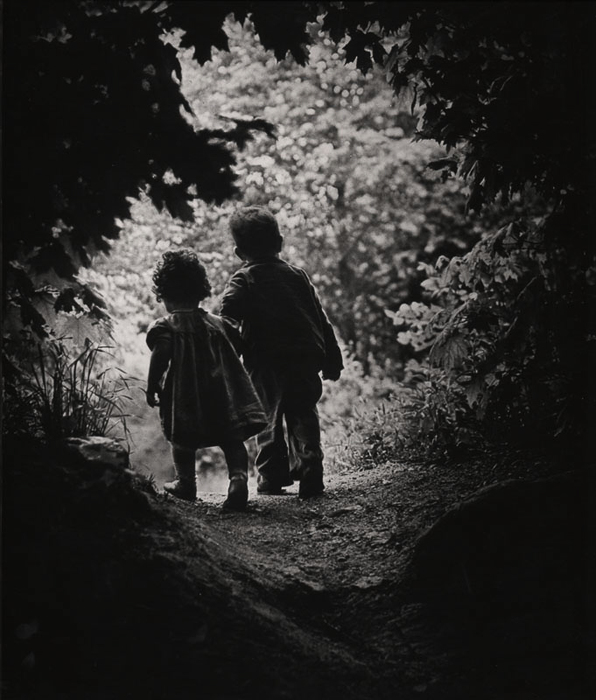At a young age, W. Eugene Smith was introduced to photography by his mother. By the time he was fifteen, he was having his images published in two local newspapers. Shortly after graduating high school, Smith began working at Newsweek. Unfortunately, his position with them didn't last long. This was because he happened to be quite stubborn in his ways, and would often not cooperate with how Newsweek wished him to carry out his job.
W. Eugene Smith continued to do a great deal of freelance work, including some for the New York Times. He started a position at LIFE, and it was here that he started documenting the war in the Pacific. Smith wanted to document the war in hopes that people would see how ridiculous and terrible he thought it was. He photographed wounded soldiers, bomber planes, Japanese victims, and plenty of other wartime sights. Unfortunately, he was struck by shrapnel from a Japanese mortar shell in April of 1945. Severe damage was caused to his face and hands, and Smith was not able to return to photography for just over a year.
In May of 1946, Smith was determined to take a new picture after his long recovery. He managed to get his camera and photograph his young son and daughter stepping out of the woods behind his own house. It was a photograph that symbolized hope, as well as the end of the long, terrible war. This picture became one of his most famous, and it is rare to read an article about him without hearing mention of it.
 |
Photo by W. Eugene Smith | The International Center of Photography
|
In the time after his work at LIFE, Smith worked on a variety of projects. One of these was an incredibly ambitious project involving Pittsburgh. Smith ended up taking thousands of photos around the area, but he was not ever able to create something that aligned with his vision. The project exhausted him, and it hurt his relationship with Magnum. Eventually, he left them as well.
Smith continued working on a variety of projects, one of which was coverage of a polluted village in Japan. Eventually, he moved to Arizona to teach at their university. In 1978, he died of a stroke. Since then, his work has been shown in countless museums, and he has become known worldwide for his effort in the field of photojournalism.
Sources:
The Photography of W. Eugene Smith. LIFE. Retrieved from https://www.life.com/photographer/w-eugene-smith/
William Eugene Smith. International Photography Hall of Fame and Museum. Retrieved from https://iphf.org/inductees/william-eugene-smith/
W. Eugene Smith. Magnum Photos. Retrieved from https://www.magnumphotos.com/photographer/w-eugene-smith/
W. Eugene Smith: Photography Made Difficult. American Masters. Retrieved from https://www.pbs.org/wnet/americanmasters/w-eugene-smith-about-w-eugene-smith/707/


No comments:
Post a Comment